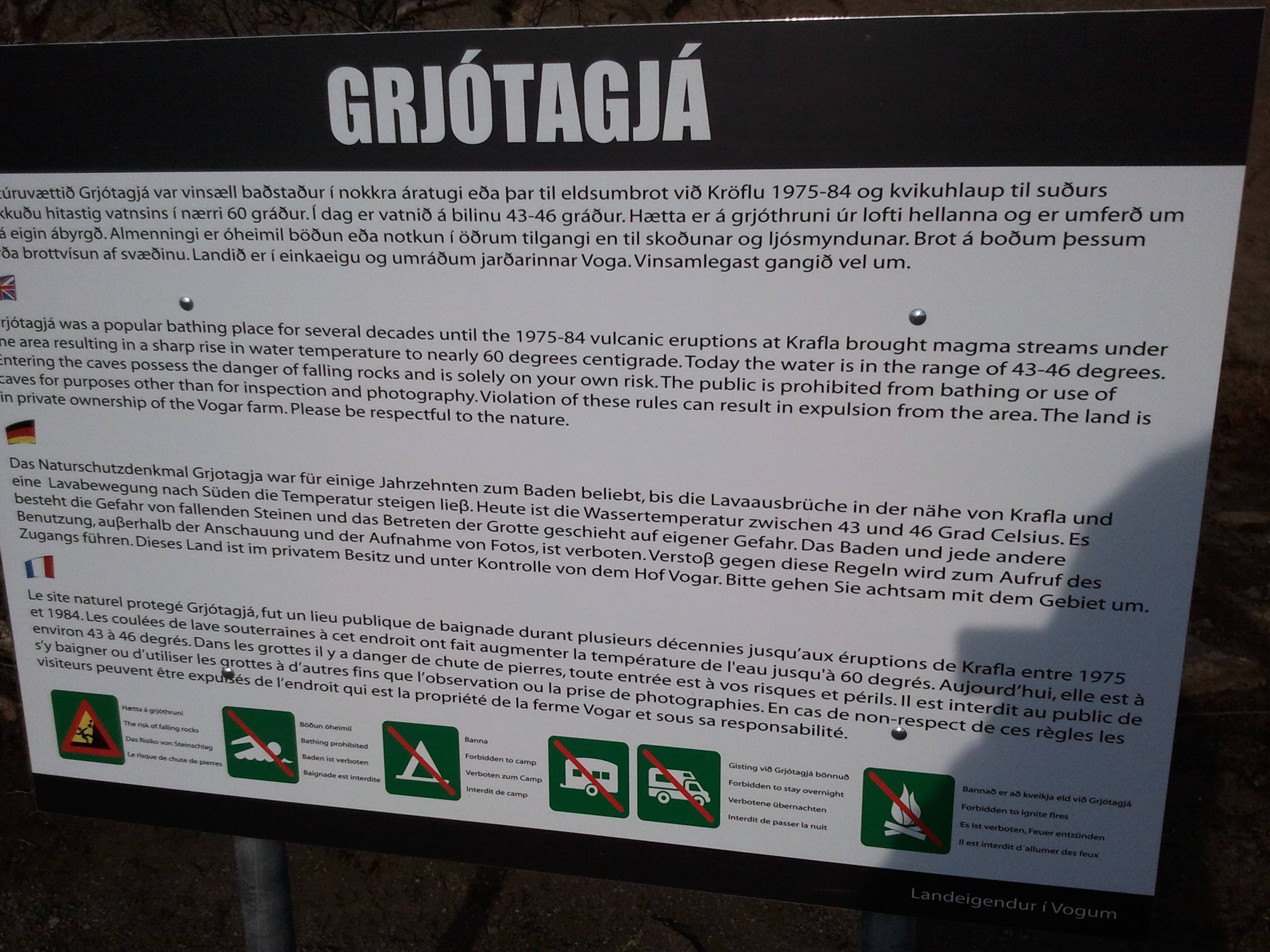I have contradictory information. Some places say that bathing is forbidden, while others say that there are no signs and locals bathe there. What's the truth?
2 Answers
Bathing in the cave dates back to the 18th century when the Icelandic outlaw Jón Markússon lived in the area and bathe there. Until the 1970s many Icelanders bathed at Grjótagjá, men in one cave and women in another. The Krafla eruptions from 1975 to 1984 caused the water in the cave to rise above 50°C. Water temperatures forced the “closing” of the cave. The water temperature did eventually return to a more suitable degree in the ’90s and bathing has resumed.
Looks like in 2013 it was possible to bath in Grjótagjá http://jdombstravels.com/bathing-grjotagj-thermal-spring/ It's a real evidence of real people who were on Grjótagjá in 2013 and bathing there.
Other sources, like this just quote the wikipedia.
If it's not enough for you - there are some photos of people who bath there.
-
Um, you've just quoted the very same link the OP had in their question? Commented Apr 9, 2014 at 14:14
-
Yes, because it's a real experience of the people who was in this cave in 2013. The other link just quote what is wikipedia says.– MikkaRinCommented Apr 9, 2014 at 14:16
-
Fair enough. Just worth explaining that it's evidence, otherwise people like me will wonder if you didn't notice :) Commented Apr 10, 2014 at 2:58
After visiting Grjótagjá, I'm able to respond my own question since @MikkaRin answer is not as complete as it should be.
When you arrive to Grjótagjá you find these panel:

It's self-explanatory: "The public is prohibited from bathing or use of caves for purposes other than for inspection and photography". Given this, it states that the temperature is between 43 and 46 degrees, over the threshold of pain (that is near 42ºC). Also, the panel warns about the possibility of falling rocks and leaves at your own risk the entry.
So if with all this you still want to bathe, is possible? Yes. When we first stayed there, nobody was watching the site and a couple of islanders (probably, not confirmed) were leaving the site after bathing. The next morning, when we returned to make some photos with natural light, nobody was at this area.
What happen if you bathe? I confess we bathed. We made a flexible interpretation of the panel: we can bathe here if we have a photographic purpose. Also, we thought that we can't have any problem with the owner of the land or the authorities (because we stayed just 30 minutes, nobody guarding and other people were bathing here before we arrive) and we thought the probability of failing rocks were very low. The big problem was the water temperature. It's very hot, hotter than I have ever tried (in Budapest I could stay 15 minutes without any problem in a 42ºC hot tub). I had to go out after 10 minutes and other friends couldn't ever stay more than 5 minutes. After bathing, you have to dry up very fast or you will start to shiver and start feeling sick (it happened to 2 of 5 persons in the group).
